#Berwickshire
Explore tagged Tumblr posts
Text
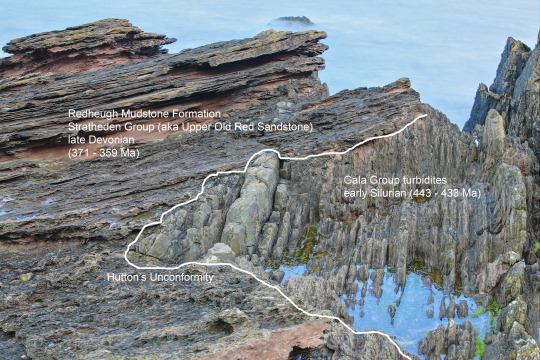

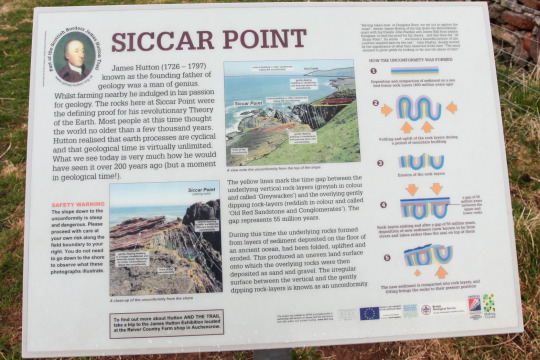
2013: From looking at Google Maps, the signage has not been updated in the last 10 years changing the stated duration of the unconformity of 55 million years to a more likely value (according to IUGS) of approx 75 million years? Siccar Point is one of the top 100 Geoheritage sites in the world.
154 notes
·
View notes
Text
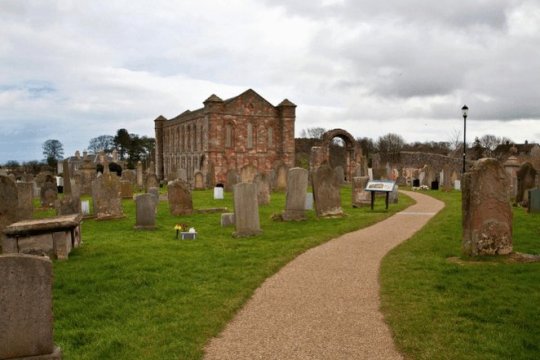
Coldingham Priory was founded on 21st June 1098.
Coldingham Priory was a house of Benedictine monks. It lies on the south-east coast of Scotland, in the village of Coldingham, Berwickshire. Coldingham Priory was founded in the reign of David I of Scotland, although his older brother and predecessor King Edgar of Scotland had granted the land of Coldingham to the Church of Durham in 1098 so he gets the official credit for founding it and a church was constructed by him and presented in 1100.
The first prior of Coldingham is on record by the year 1147, although it is likely that the foundation was much earlier. The earlier Columban Abbey founded by St. Æbbe sometime circa 640 AD. Although the monastery was largely destroyed by Oliver Cromwell in 1648, there are still extant remains of the priory. The choir of which forms the present parish church of Coldingham, and is serviced by the Church of Scotland. The model shows how extensive the abbey was in Medieval times, although for me it lacks the grandiose that the border abbeys at Dryburgh, Melrose and Kelso have.
Having said that I the reconstruction doesn’t do it justice, as you can see in the ruinous 18th century drawing they have not incorporated the tower in the model, a shocking omission in my opinion.
The choir is a substantial rectangular building with a fine interior, now used as the parish church. The nave was a massive building with aisles and filled much of what is now the graveyard but is mostly gone, and there was a large tower, rising to 90 foot over the crossing. Some of the domestic buildings are very ruinous but have been cleared and landscaped, and carved fragments and gravestones are on display as well as a transept arch.
As with all the border towns an abbeys it had a turbulent history, the priory was sacked in 1216, 1419 and 1542 by the English, besieged by the Scots in 1544, then attacked again by the English. Mary, Queen of Scots, stayed here in 1566. An ‘abbey place’ is mentioned in 1621, presumably a residence in the priory, but much of the building was damaged by Cromwell’s forces in 1648 (or 1650) after a two-day siege with cannon. The large central tower collapsed in the middle of the 18th century.
The lands of the priory had gone to the Homes after the Reformation, then to the Stewarts, then later to the Homes again, while the choir of the priory was (and is) used as the parish church (Priory Church).
The grand tower collapsed in 1770, apparently revealing the cadaver of a lady who had been sealed up in the walls, and the remains of the church were renovated in the 1850s and 1950s. There are many interesting memorials in the extensive graveyard and pleasant walks around the scenic village. There is a fine beach at Coldingham Bay.
I don't think you get the sheer scale of the Priory until you see something like Andrew Sparatts mock up gif of how it could have looked, as in the animation.
There’s a great timeline of the abbey here
https://www.coldinghamparish.co.uk/.../COLDINGHAM-PRIORY...
18 notes
·
View notes
Text

Common Lobster (Homarus gammarus), St Abbs (St Abbs and Eyemouth Voluntary Marine Reserve), Berwickshire, Scotland, UK, October 2011. 2020VISION Book Plate. Did you know? Crustaceans have blue blood, which unlike vertebrate blood relies on copper to carry oxygen.
Photographer: Linda Pitkin / 2020VISION
#linda pitkin#photographer#common lobster#lobster#homarus gammarus#berwickshire#scotland#united kingdom#marine#st abbs and eyemouth voluntary marine reserve#nature
13 notes
·
View notes
Text

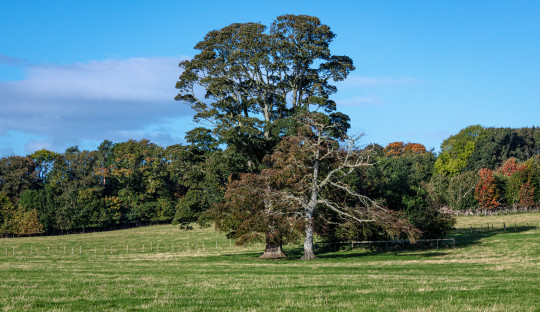
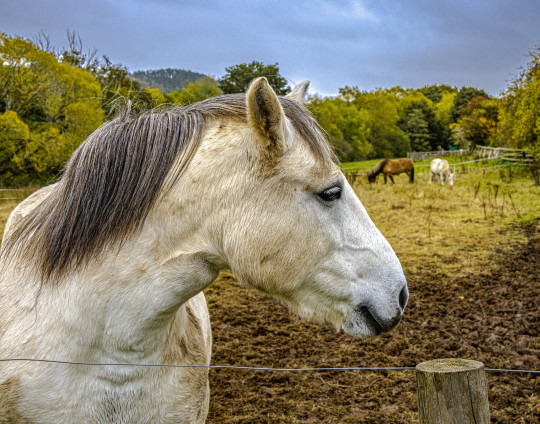
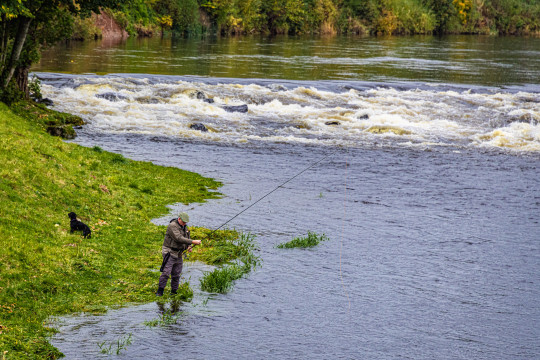
Scotland 2022 (2) (3) (4) by badnewf
Via Flickr:
(1) Two sheep and a pony seem to enjoy each other's company at Broadmeadow Farms, Hutton, Scotland. (2) Trees in autumn landscape at Broadmeadow Farms. (3) Horses along the Tweed, Melrose, Scotland. (4) Angling the River Tweed.
8 notes
·
View notes
Text





Flag Wars Bonus Round
15 notes
·
View notes
Photo



(via "BERWICKSHIRE Gifts, Stickers & Products (S)" Sticker for Sale by mpodger)
#findyourthing#redbubble#berwickshire#berwickshire flag#county of berwickshire#scotish counties#scotish flags#british flags#uk flags#blue#yellow#green
0 notes
Text
Hume Castle, Borders
Hume Castle stands on a prominent site, visible for miles round. Initially, this gave it great defensive strengths, but by the later 18th century the ‘considerable eminence’ was thought the perfect site for an eye-catcher. The ruins of the ancient fortification were pulled down and the stone reused to create a curiously crenellated sham castle. Continue reading Hume Castle, Borders

View On WordPress
#Alexander Curle#Berwickshire Civic Society#Borders#Clan Home Association#David Mylne#Earl of Marchmont#Greenlaw#Hume Castle#Hume Castle Preservation Trust#Marchmont House#The Scotsman
0 notes
Photo




In Iran in 1943, a group of Polish soldiers found and adopted an orphaned brown bear cub whose mother had been shot and killed by hunters. They gave him the name Wojtek, meaning “joyful warrior.”
When Wojtek was first rescued, he had swallowing problems; the soldiers fed him with condensed milk and gradually marmalade, honey, syrup, and fruit. The soldiers would reward him with beer which quickly became his favourite. He also enjoyed stealing and eating cigarettes. Wotjek was taught to salute when he was greeted and his main hobby was wrestling with the soldiers and swimming.
Due to Wojtek being an animal, he was not allowed into theatres of operation, much to the dismay of the soldiers who raised him. They knew that they couldn’t give up on him - he had quickly became their boost to morale and their unofficial mascot. In a true testament to the quote “leave no man behind,” they enlisted him into the 22nd Artillery Transport Company of the 2nd Corps, and even gave him the rank of private meaning he had his own.
Wojtek lived with the other soldiers in their own tent and most notably, accompanied them in the Balle of Monte Cassino where he carried crates of ammunition. Following WWII, Wojtek , along with the rest of the 2nd Corps, were transported to Berwickshire, Scotland where, due to his popularity, Wojtek was awarded as an honorary member of the Polish-Scottish Association. After demobilization, Wotjek was sent to Edinburgh Zoo where he died at the age of 21, weighing 500 pounds, and standing over 6 feet.
After his death, numerous memorials commemorating this extraordinary and loyal bear were erected worldwide.
146 notes
·
View notes
Text
More images of 1913 fashion -
1913 Ethel Mary, née Bell-Irving, later 15th Countess of Lauderdale by Samuel Henry William Llewellyn (Thirlestane Castle - Lauder, Berwickshire, UK) From centuriespast.tumblr.com/post/148847411164/ethel-mary-18911970-15th-countess-of 815X1200.

Left 1913 Gazette du Bon Ton "Le Conseiller des Dames Robe et Manteau pour le Theatre" by Barbier 643X844.
Right 1913 Gazette du Bon Ton "Tais-Toi Mon Coeur!… Robe de lingerie de Doeuillet 1913 Gazette du Bon Ton "Le Marriage au Chateau" by Brissaud artophile.com 750X1011.

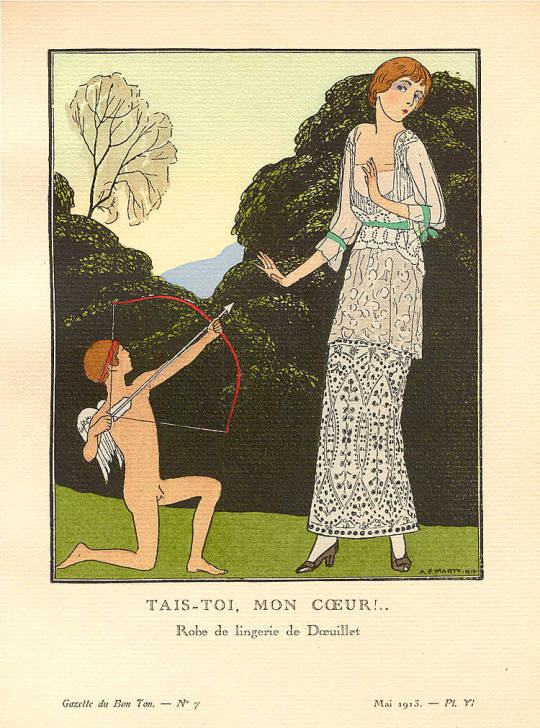
1913 Gazette du Bon Ton "Le Marriage au Chateau" by Brissaud. From artophile.com 1797X1125.
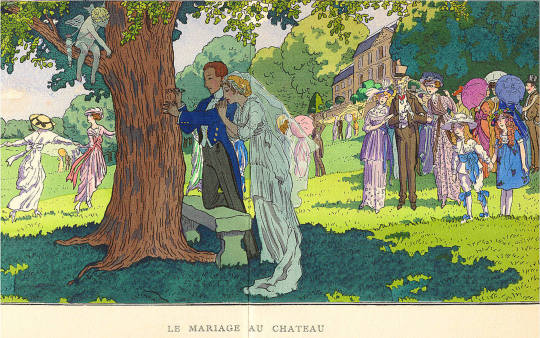
Left 1913 Journal des Dames et des Modes "Manteau de velours frappe citron. Col velours blance et Renard blanc" by Dammy. From artophile.com 750X1189.
Center 1913 Journal des Dames et des Modes "Mantelet de taffetas a la vieille garni de chenille verte - Manchon brode de perles". From artophile.com 757X1200.
Right 1913 Journal des Dames et des Modes "Parure d'Hermine et Putois". From artophile.com 701X1200.
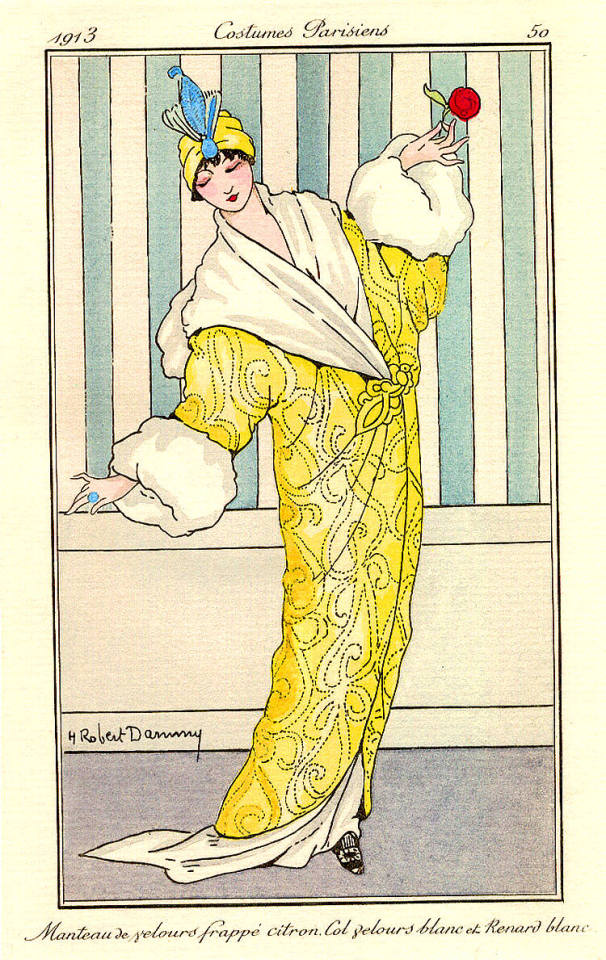

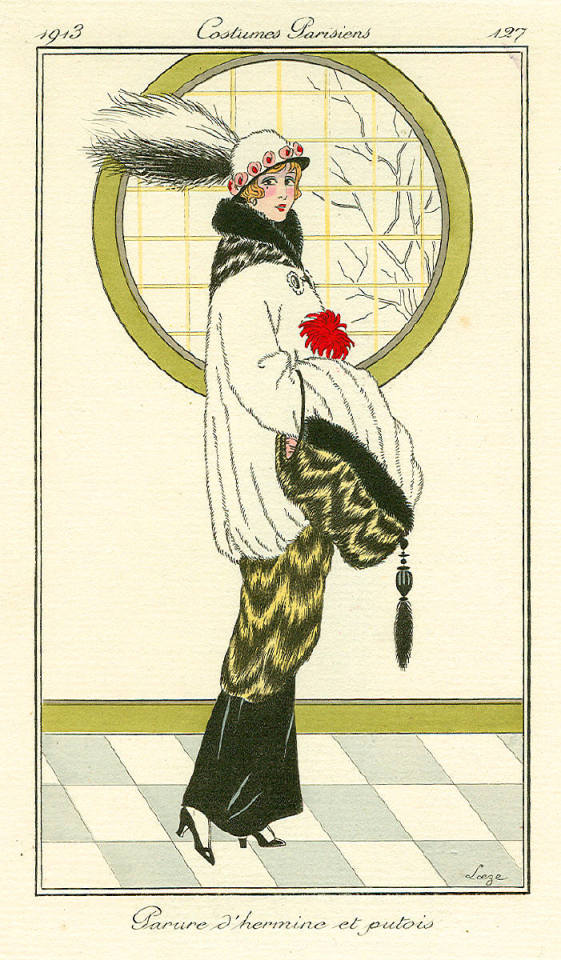
1913 Lady, traditionally identified as Rosa Lewis by Frank Moss Bennett (auctioned by Christie's). From their Web site 906X1904.

Left 1913 Journal des Dames et des Modes "Robe de charmeuse blance a tunique de mousseline de soie violette brodee de perl et bordee de skunks. Manteau de velours etrusque" by Pichenot artophile.com 750X1197.
Right 1913 Journal des Dames et des Modes "Robe de charmeuse nore avec corsage et panier formes d'un obi drape" by Barbier artophile.com 734X1200.

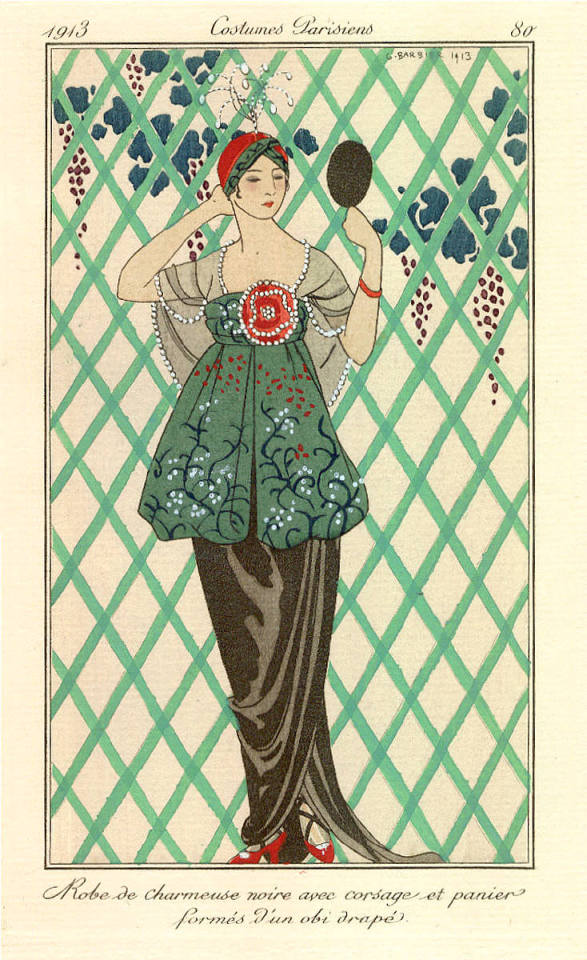
1913 Madame Jean Maillard-Norbert by Léon François Comerre (location ?). From tumblr.com/eirene; fixed most obvious spots w Pshop 1332X3072.

1913 Lina Bilitis with Two Pekinese by Giovanni Boldini (location ?). From Amber Tree's photostream on flickr 1510X2872.

1913 Madame Michelham by Giovanni Boldini (location ?). From wikiart.org-en-giovanni-boldini-madame-michelham-1913 1589X2356 @72.
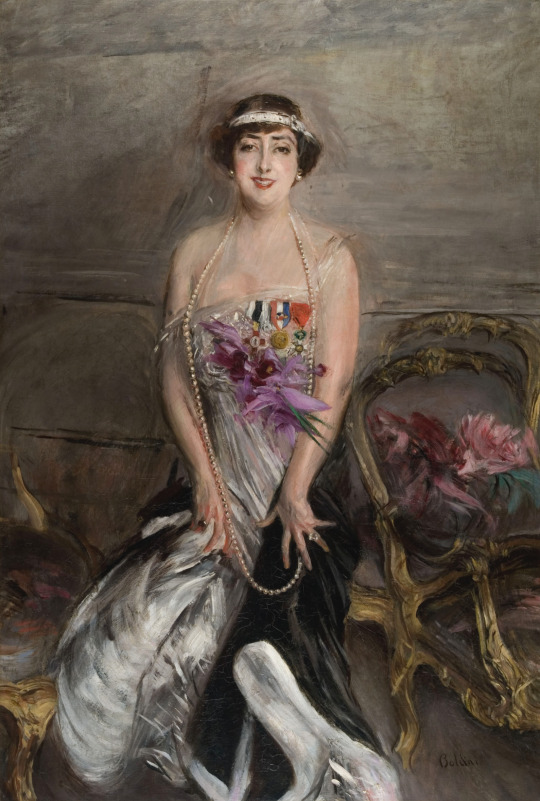
1913 María Teresa González del Valle by Nicanor Piñole (Fundación Banco Santander - Madrid, Spain). From artsandculture.google.com; fixed spots w Pshop 2036X2698.

1913 Señora, amiga de Mr. Ryan by Joaquín Sorolla y Bástida (Museo Nacional de Bellas Artes - La Habana, Cuba). From joaquin-sorolla.blogspot.com/search/label/Retrato%20de%20Señora 1191X1600.

1913 Evening dress of Vera Karakhan by House of Paul Poiret (Hermitage). From tumblr.com/antiquebee/731802632464875520?.
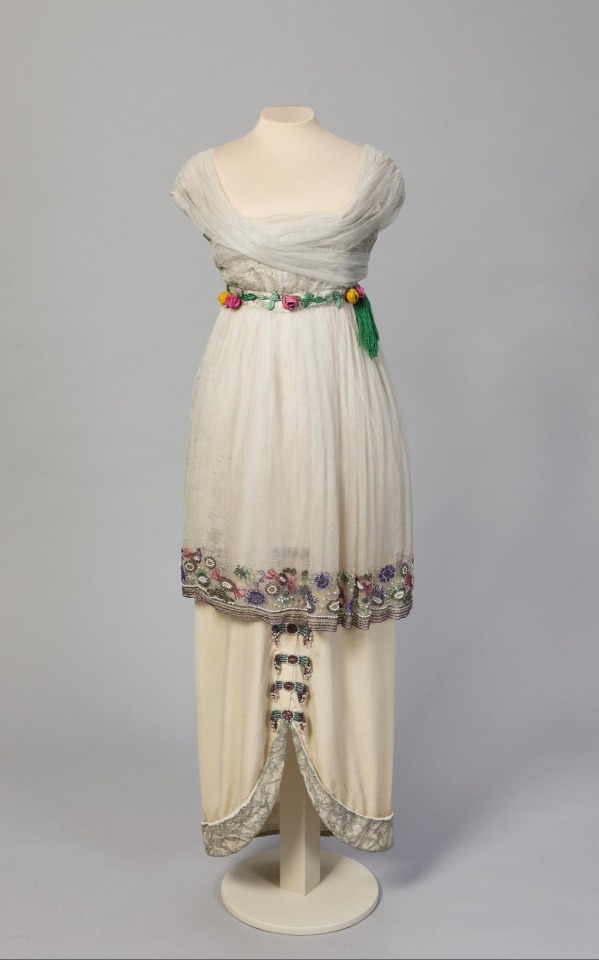
Left 1913 (June issue) La Gazette du Bon Ton, "Je Suis Perdue Robe d'été de Chéruit" tumblr.com/mote-historie/729728522325753856/pierre-brissaud-je-suis-perdue-robe-d%C3%A9t%C3%A9-de?source=share&.
Center 1913 La Mode cover art La Mode par Boué Soeurs by George Barbier. From tumblr.com/mote-historie/731263453639196672/george-barbier-la-mode-par-bou%C3%A9-soeurs-french?source=share&.
Right 1913 Les Modes Dinner Dresses by Gustave Beer. From tumblr.com/mote-historie/731172312816254976/dinner-dresses-by-beer-1913?source=share& 1975X2861


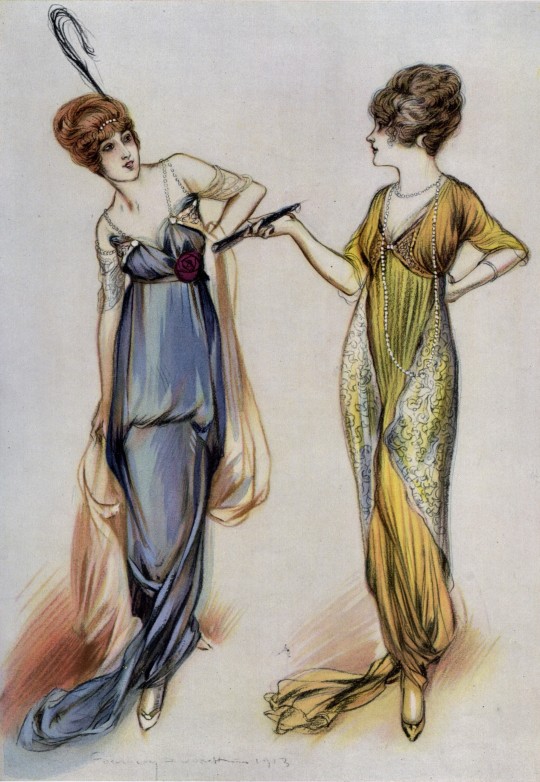
Left 1913 Tanzerin by Julie Wolfthorn (location ?). From tumblr.com/random-brushstrokes 727X1024.
Right 1913 Anastasia Mikhailovna de Torby, Philip de László (location ?). From tumblr.com/la-belle-histoire/745161897381445633/portrait-of-anastasia-mikhailovna-de-torby-philip? 608X960.

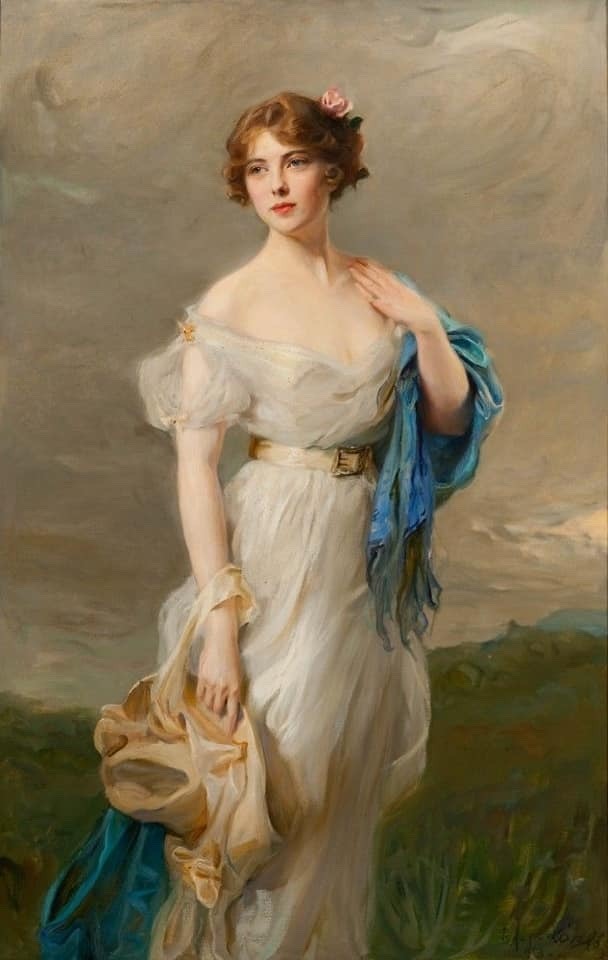
Left ca. 1913 Dame in een zwarte strompeljapon met kant by anonymous (Rijksmuseum). From their Web site; fixed flaws & spots w Pshop 3542X5395.
Right ca. 1913 Dame in een geel/groen geruite strompeljapon by anonymous (Rijksmuseum). From their Web site; fixed flaws & spots Pshop 3476X5328; fixed flaws & spots w Pshop 3645X5328

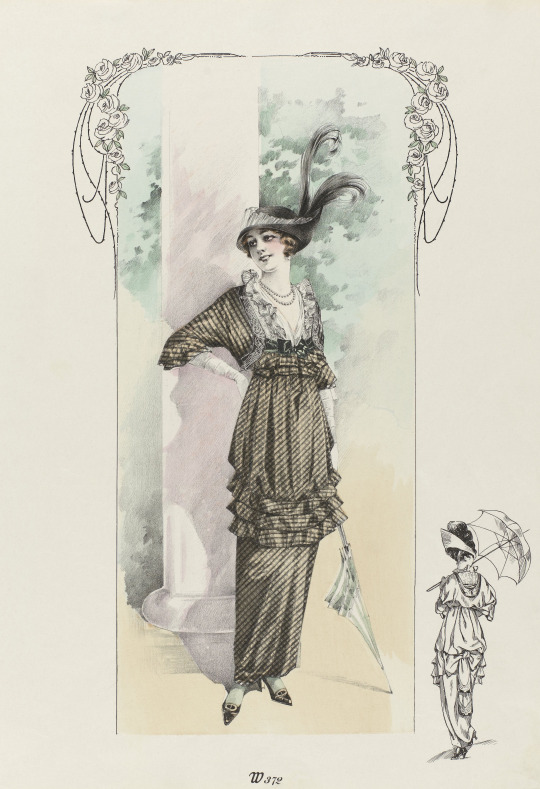
#1913 fashion#1910s fashion#Belle Époque fashion#Edwardian fashion#Ethel Mary Bell-Irving#Samuel Henry William Llewellyn#George Barbier#pochoir#Pierre Brissaud#Robert Dammy#Rosa Lewis#Frank Moss Bennett#Robert Pichenot#Jean Maillard-Norbert#Léon François Comerre#Lina Bilitis#Giovanni Boldini#Madame Michelham#María Teresa González del Valle#Nicanor Piñole#Joaquín Sorolla y Bástida#Julie Wolfthorn#Vera Karakhan#Poiret#evening dress#Chéruit#day dress#parasol#small hat#Beer
34 notes
·
View notes
Text




25th December 1665 saw the birth of songwriter a nd poet Lady Grizell Baillie.
Lady Grizel, also spelled Grisel at times, was born at Redbraes Castle in Berwickshire, the eldest daughter of Covenanter Sir Patrick Hume of Polwarth.
At age 12, she smuggled letters from her father to the imprisoned patriot Robert Baillie of Jerviswood. Sir Hume publicly defended Baillie, and after Baillie’s execution, Sir Hume’s castle was confiscated, forcing Sir Hume into hiding in a vault beneath Polwarth Church in Edinburgh. The family later fled to Holland, finally returning to Scotland to participate in the “Glorious Revolution” of 1688. In 1692, Grizel Hume married Robert Baillie’s son George, and in 1696, Sir Hume was made Lord Chancellor of Scotland. Lady Grizel’s verses bear mournful witness to suffering.
Only two of Lady Grizel’s songs survive: “The ewe-butchin’s bonnie,” which may have been inspired by her father’s ordeal, and “Werena my Heart’s licht I wad dee,” which appeared in the Scottish folk song collection Orpheus Caledonius and in volume 4 of Tea Table Miscellany . The Household Book of Lady Grisell Baillie offers a detailed portrait of domestic expenditures and daily life at a Scottish country house. Lady Grizel Baillie is buried on the grounds of Mellerstain House, her home in the final decades of her life.
The handheld wooden lantern the young Lady Grizel took on nightly visits to her father is now in the collections of the National Museums of Scotland, as seen among the pics. The old Deaconess Hospital at The Pleasance, Edinburgh was dedicated to her.
Werena My Heart Licht I Wad Dee
By Lady Grizel Baillie
There was ance a may, and she lo’ed na men;
She biggit her bonnie bow’r doun i’ yon glen;
But now she cries, Dool and a well-a-day!
Come doun the green gait and come here away!
When bonnie young Johnnie cam’ owre the sea
He said he saw naething sae lovely as me;
He hecht me baith rings and monie braw things;
And werena my heart licht, I wad dee.
He had a wee tittie that lo’ed na me,
Because I was twice as bonnie as she;
She raised sic a pother ‘twixt him and his mother,
That werena my heart licht, I wad dee.
The day it was set, and the bridal to be
The wife took a dwam and lay doun to dee;
She maned, and she graned, out o’ dolour and pain,
Till he vowed that he ne’er wad see me again.
His kin was for ane o’ a higher degree,
Said, what had he do wi’ the likes o’ me?
Albeit I was bonnie, I wasna for Johnnie:
And werena my heart licht, I wad dee.
They said I had neither cow nor calf,
Nor dribbles o’ drink rins through the draff,
Nor pickles o’meal rins through the mill-e’e;
An werena my heart licht, I wad dee.
His tittie she was baith wily and slee,
She spied me as I cam’ owre the lea,
And then she ran in and made a loud din;
Believe your ain een an ye trow na me.
His bannet stood aye fu’ round on his brow
His auld ane looked aye as weel as some’s new;
But now he lets ’t wear ony gate it will hing,
And casts himsel’ dowie upon the corn-bing.
And now he gaes daund’ring about the dykes
A a’ he dow do is to hund the tykes;
The love-lang nicht he ne’er steeks his e’e;
And werena my heart licht I wad dee.
Were I but young for thee, as I ha’e been
We should ha’e been gallopin’ doun in yon green,
And linkin’ it on the lily-white lea;
And wow, gin I were but young for thee.
10 notes
·
View notes
Text

Gordon Burn Prize 2025 opens for entries
The Gordon Burn Prize is open now to fiction and non-fiction published between 1 December 2023 and 30 November 2024 that pushes boundaries, crosses genres, and challenges expectations, following in the footsteps of writer Gordon Burn.
Judged by Terri White, Carl Anka, Angela Hui, Sarah Phelps and David Whitehouse, and supported by Newcastle University, the winner will receive £10,000 and the chance to undertake a writing retreat at Gordon Burn’s cottage in Berwickshire. Deadline 1 August.
Learn more here: https://newwritingnorth.com/gordon-burn-prize/
#writeblr#writers on tumblr#writing#creative writing#writer#writer stuff#writing community#on writing#writerscommunity#writers
4 notes
·
View notes
Text
WALES FINISHED DECLARING
THERE ARE NO TORY MPS IN WALES
they’ve won in berwickshire tho so they’re not evicted from scotland unfortunately
3 notes
·
View notes
Text
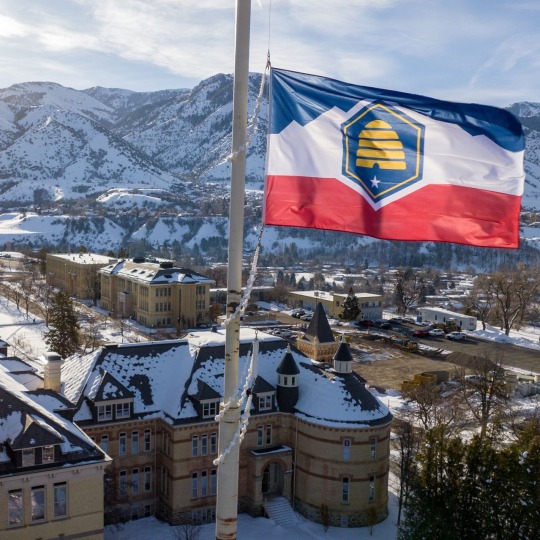
2023 New Flag Wars: Round 1
This tournament follows up the previous competition to find the best new flag adopted last year! While the last tournament focused just on Czech flags, this one features flags from all over the world and also includes the winner of the Czech tournament. Let me know which flag you’re rooting for in the comments!
Round 1:
1. Kirnaičiai, Lithuania vs. Kareivonių, Lithuania vs. Vidiškiai, Lithuania vs. Skapiškis, Lithuania vs. Sužionys, Lithuania vs. Subačius, Lithuania vs. Avižieniai, Lithuania
2. Nixa, Missouri vs. Křečhoř, Czechia
3. Moberly, Missouri vs. Cooperstown, New York vs. Banffshire, Scotland
4. Cubolta, Moldova vs. Minnesota
5. Kansas City, Missouri vs. Nustrow, Germany vs. Stanford Doerr School of Sustainability
6. Gilbert, West Virginia vs. Sandy, Utah
7. Burns Lake, British Columbia vs. Lawrence County, Pennsylvania vs. Berwickshire, Scotland
8. Forest Finns vs. San Giorgio Bigarello, Italy vs. Moray, Scotland
9. Cleves, Ohio vs. Frederick County, Maryland
10. Syracuse, New York vs. Morristown, New Jersey vs. Martinique
11. Aberdeenshire, Scotland vs. Römnitz, Germany
12. Yucatán, Mexico vs. Frankfort, Indiana
13. Kent, Ohio vs. Byhalia, Mississippi
14. Lago Vista, Texas vs. High Point, North Carolina vs. Cedar City, Utah
15. Ogden, Utah vs. Córdoba, Argentina
16. Utah vs. Kennett Township, Pennsylvania
32 notes
·
View notes
Photo



(via "BERWICKSHIRE Gifts, Stickers & Products (N)" Sticker for Sale by mpodger)
#findyourthing#redbubble#BERWICKSHIRE#COUNTY OF BERWICKSHIRE#BERWICKSHIRE FLAG#BRITISH FLAGS#UK FLAGS#SCOTISH FLAGS#GREEN#BLUE#YELLOW
1 note
·
View note
Text

Wayne: Occupational name meaning "wagon maker, cartwright", derived from Old English wægn "wagon".
Grayson: Means "son of the steward", derived from Middle English greyve "steward".
Cain: Most likely from the given name Cain, which means "acquired" in Hebrew.
Todd: Means "fox", derived from Middle English todde.
Drake: Derived from the Old Norse byname Draki or the Old English byname Draca both meaning "dragon", both via Latin from Greek δράκων (drakon) meaning "dragon, serpent".
Head: From Middle English hed meaning "head", from Old English heafod. It may have referred to a person who had a peculiar head, who lived near the head of a river or valley, or who served as the village headman.
Thomas: Derived from the given name Thomas, which is a Greek form of the Aramaic name תָּאוֹמָא (Ta'oma') meaning "twin".
Pennyworth: From Old English pening, penig meaning "penny (the coin)" and worþ meaning "enclosure". A notable fictional bearer is Alfred Pennyworth, a DC Comics character notable for being the butler of the superhero Batman.
Thompkins: From a diminutive of the given name Thomas.
Bertinelli: ???
Gordon: From the name of a place in Berwickshire, Scotland, derived from Brythonic words meaning "spacious fort".
5 notes
·
View notes

